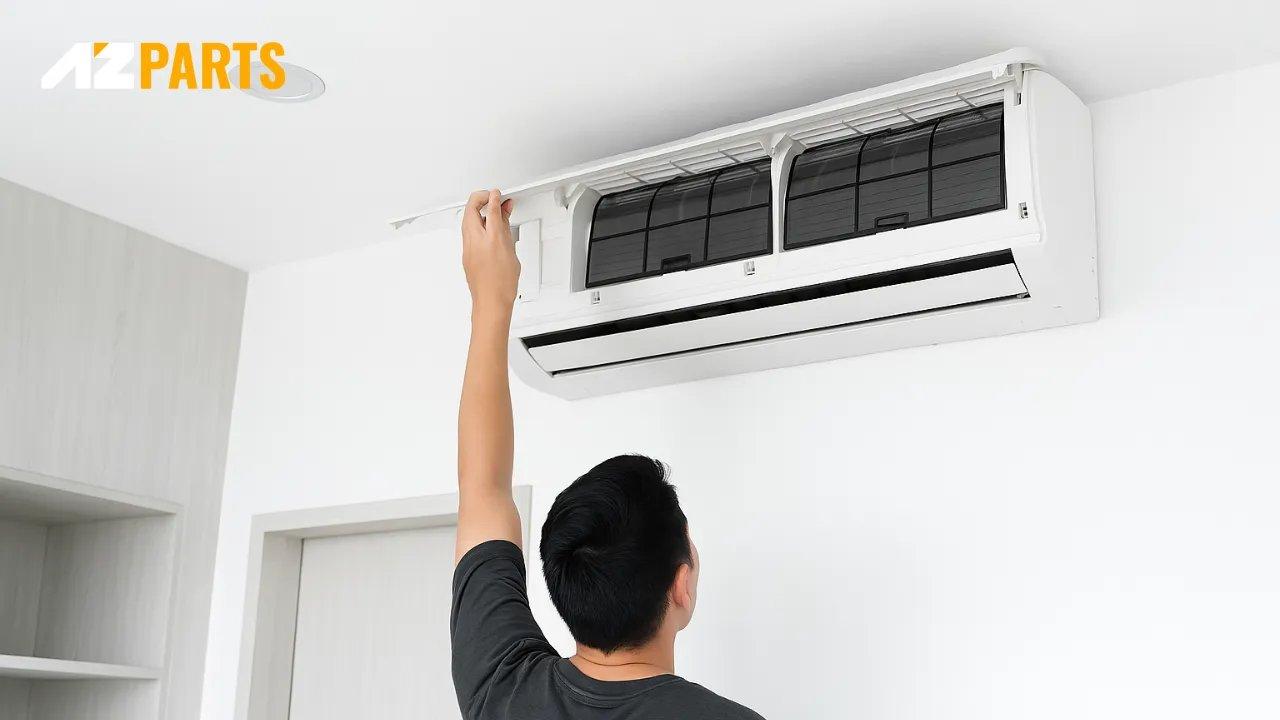Repair help
How to Tune Up Your AC for Saving Energy
AZparts Team
Updated on July 31, 2025
7 min read
Want to lower your electricity bill without sacrificing comfort? Tuning up your air conditioner is one of the easiest and most effective ways to boost energy efficiency at home. Whether you're a DIYer or just looking to stay ahead of breakdowns, using the right parts is key. At AZParts, you'll find reliable AC components like piercing valves, port adapters, covers, and capacitors, everything you need to keep your system running at peak performance.

1. What Is an AC Tune-Up?
An AC tune-up is a series of simple maintenance tasks you can do to keep your air conditioner running smoothly and efficiently. Just like changing the oil in a car, regular tune-ups help your AC perform at its best and prevent small issues from turning into bigger problems.
A typical DIY tune-up may include cleaning or replacing the air filter, clearing debris around the outdoor unit, checking for visible blockages in vents, and gently cleaning the condenser fins. You might also inspect the drain line for clogs and make sure your thermostat is set correctly.
These steps don’t require professional tools, but just a bit of attention and care. Performing them regularly can help you avoid unexpected breakdowns and keep your home cool with less energy use.
2. Why Is an AC Tune-Up Important?
Over time, even a good air conditioner can lose efficiency due to dust buildup, clogged filters, or worn components. Without regular upkeep, your AC has to work harder to cool your space, leading to higher energy bills and more wear and tear.
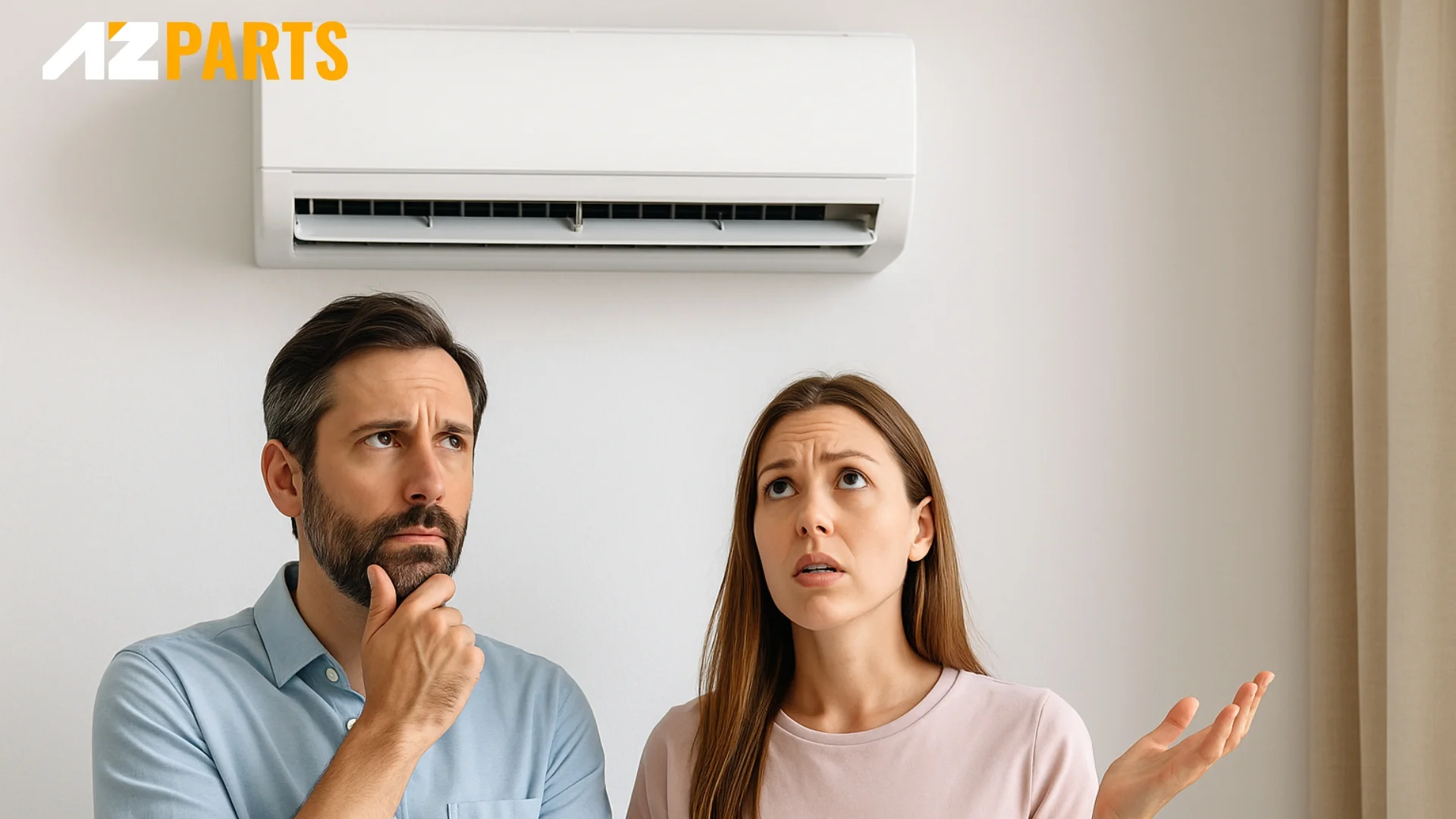
Couple concerned about AC maintenance (Source: AZParts)
By tuning up your AC on your own, you can spot early signs of trouble, restore airflow, and help your unit cool more effectively. Simple tasks like clearing the drain line or cleaning the outdoor coil can make a noticeable difference in performance.
Regular DIY maintenance not only saves money but also extends the life of your AC. Instead of waiting for something to go wrong, a tune-up gives you more control over your system and helps you stay ahead of problems before they start.
3. How to Tune Up Air Conditioner
Tuning up your air conditioner is one of the most effective ways to improve energy efficiency, extend its lifespan, and reduce long-term repair costs. Whether you're prepping for summer or maintaining year-round comfort, follow these key steps to make sure your AC runs at peak performance.
3.1. Check Thermostat
Begin by inspecting your thermostat settings. Make sure it's set to “cool” and your desired temperature is accurate. If you’re using an old manual thermostat, consider upgrading to a smart or programmable one for better energy control. Calibrating the thermostat ensures your AC doesn't overwork due to false readings.
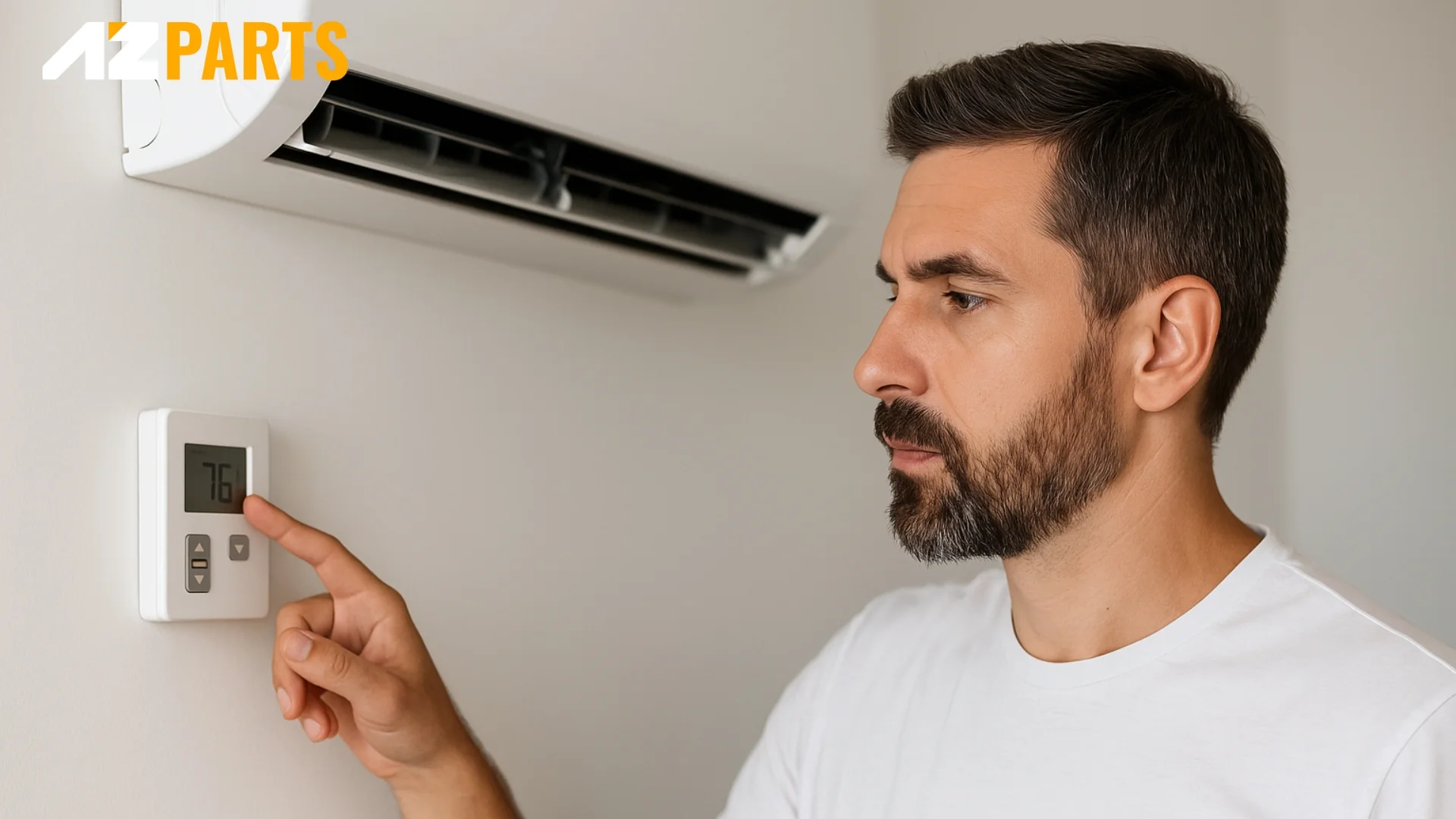
Checking AC thermostat on wall (Source: AZParts)
3.2. Inspect AC Cabinet & Evaporator Coil
Open the indoor air handler and inspect the cabinet and evaporator coil. Dust and grime can accumulate on the coil over time, blocking airflow and reducing cooling efficiency. Carefully clean the coil using a soft brush or a no-rinse coil cleaner. This step helps restore your system’s ability to absorb heat effectively.
3.3. Evaluate Drain Pan
Look beneath the evaporator coil to check the drain pan for any standing water, corrosion, or mold growth. If water is collecting in the pan, it may mean the drain line is clogged or the pan is cracked. Keeping the pan clean and clear helps prevent water damage, mold, and unpleasant odors in your home.
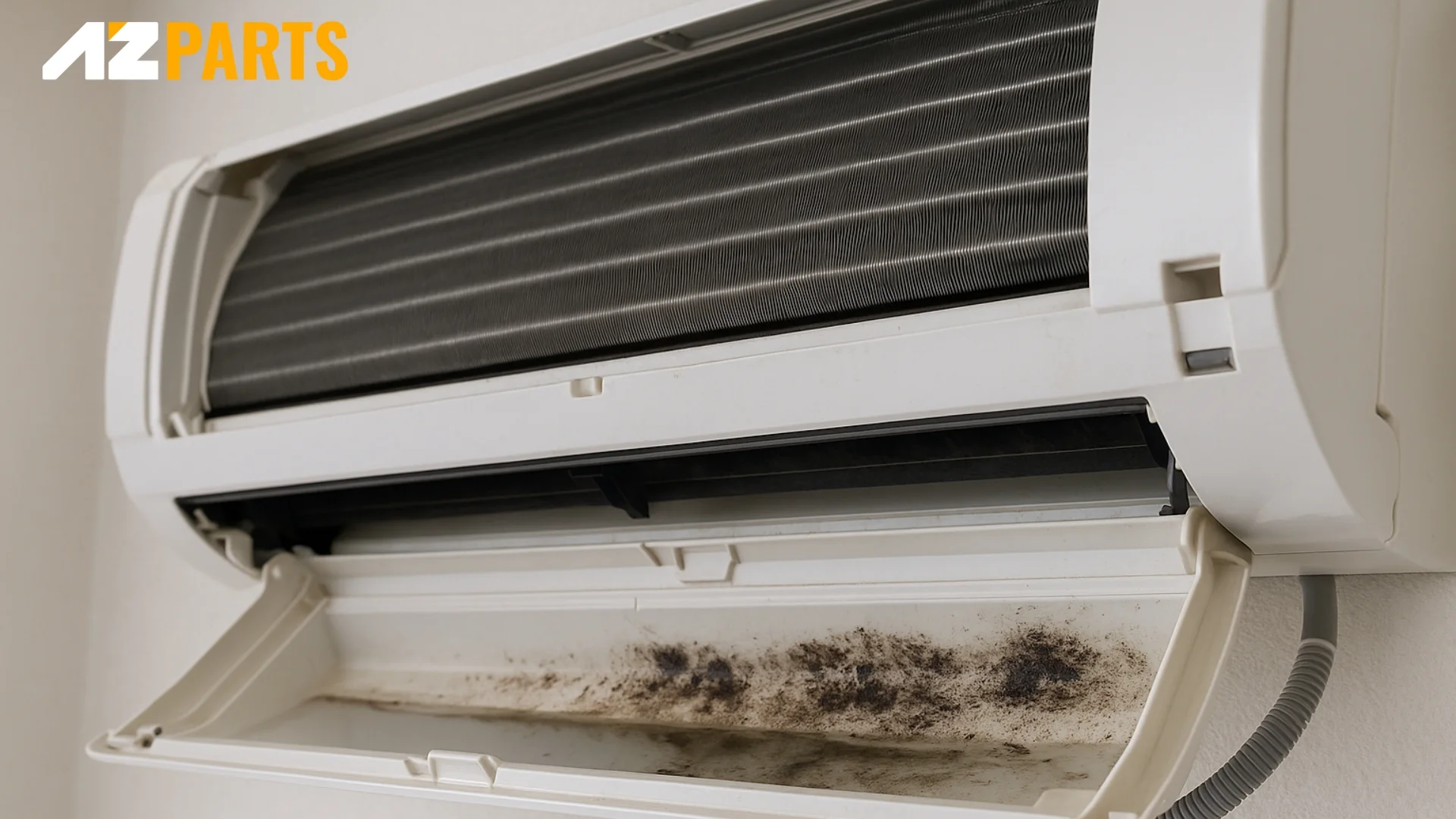
Evaluating Air Conditioner Drain Pan for Leaks and Mold (Source: AZParts)
3.4. Inspect Blower Motor
The blower motor is responsible for circulating cool air throughout your home. Check for dust buildup on the fan blades and listen for unusual noises that may indicate worn bearings or loose belts. If airflow feels weak or uneven in your rooms, your blower motor might be struggling and may require cleaning, lubrication, or replacement.
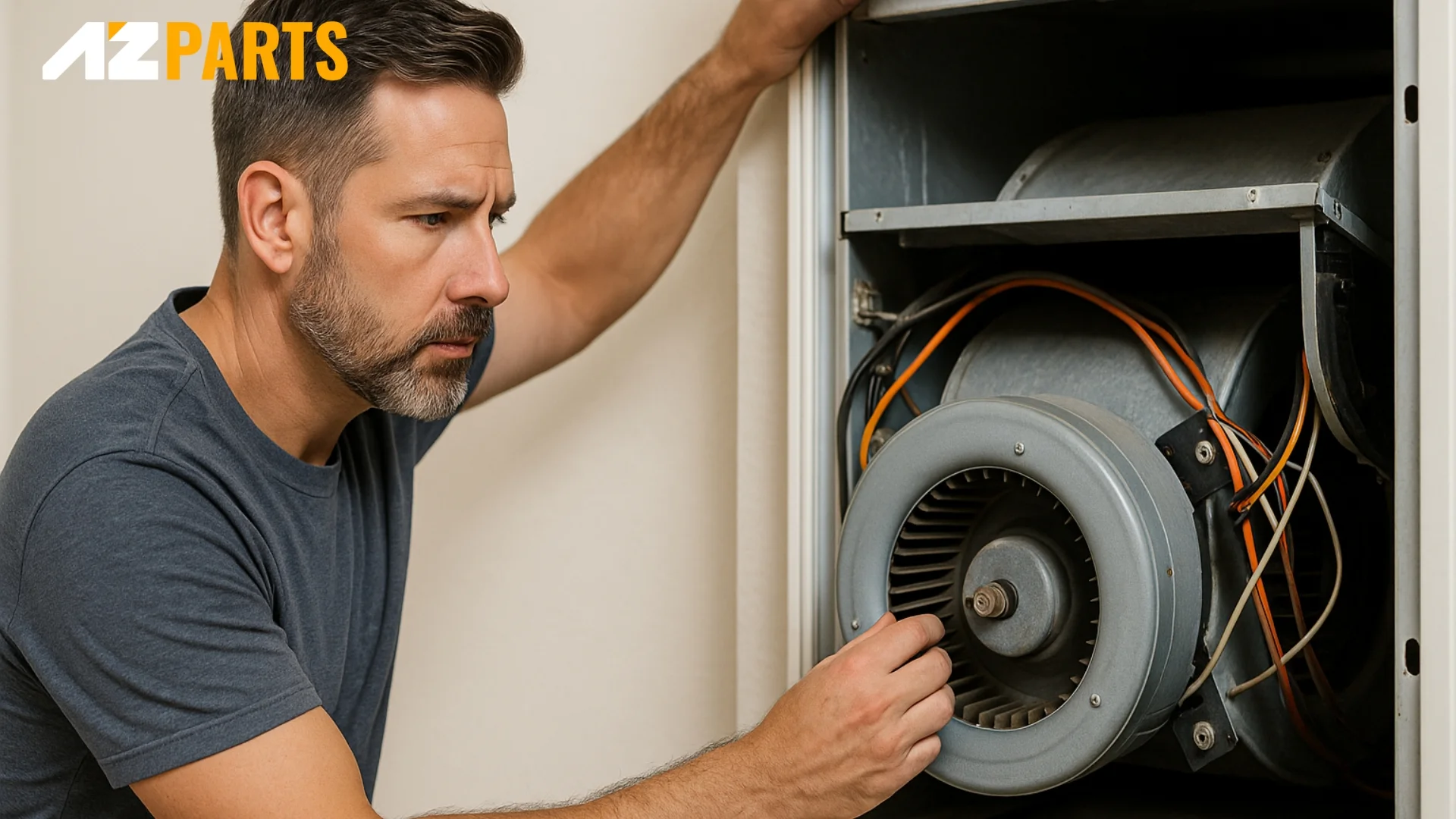
Inspecting AC blower motor (Source: AZParts)
3.5. Evaluate Airflow
Inspect all air vents and registers to ensure they’re not blocked by furniture, curtains, or dust. Reduced airflow can strain the system and increase energy use. It’s also a good idea to replace the air filter if it looks dirty or clogged, as clean filters are crucial for airflow and air quality.
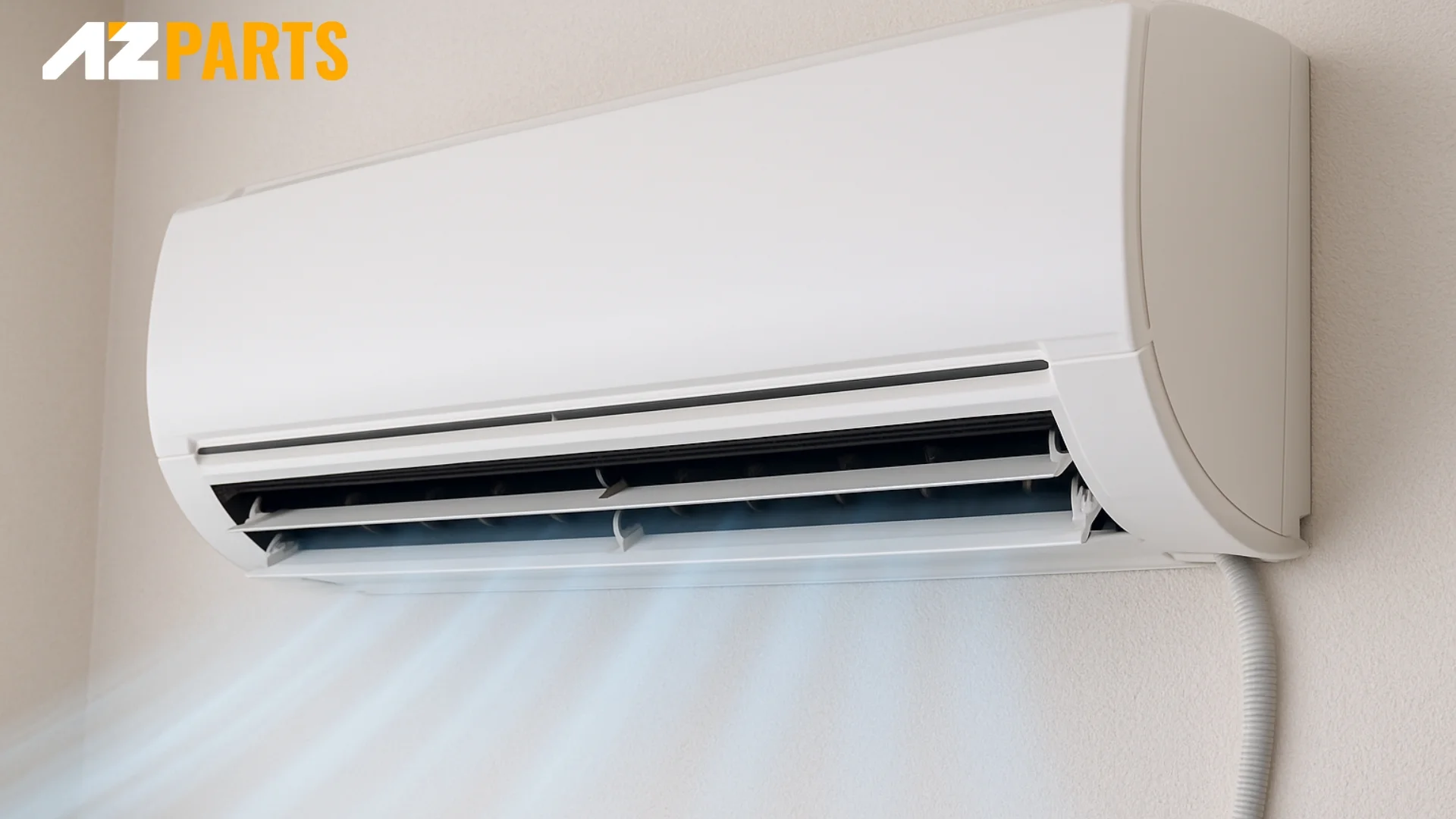
Evaluating AC airflow to feel air strength and temperature (Source: AZParts)
3.6. Remove Visible Condensate
Check for visible moisture or condensation around the evaporator coil and inside the cabinet. If too much water is present, it could indicate high humidity levels, a clogged drain, or a failing part. Wipe down excess moisture and ensure the drain system is functioning correctly to avoid mold growth and system inefficiency.

Removing Visible Condensate from AC Unit with Cloth During Maintenance (Source: AZParts)
3.7. Test Electrical Components
Electrical wear and tear can cause your AC to malfunction or even pose safety risks. Carefully inspect the wiring, connectors, and relays for burn marks or corrosion. Don’t forget to test the AC capacitor, a critical part that helps the compressor and fan motor run. If your system struggles to start or stops abruptly, the capacitor may need replacement. Use high-quality AC capacitors from AZParts to restore reliable operation and extend your unit’s lifespan.
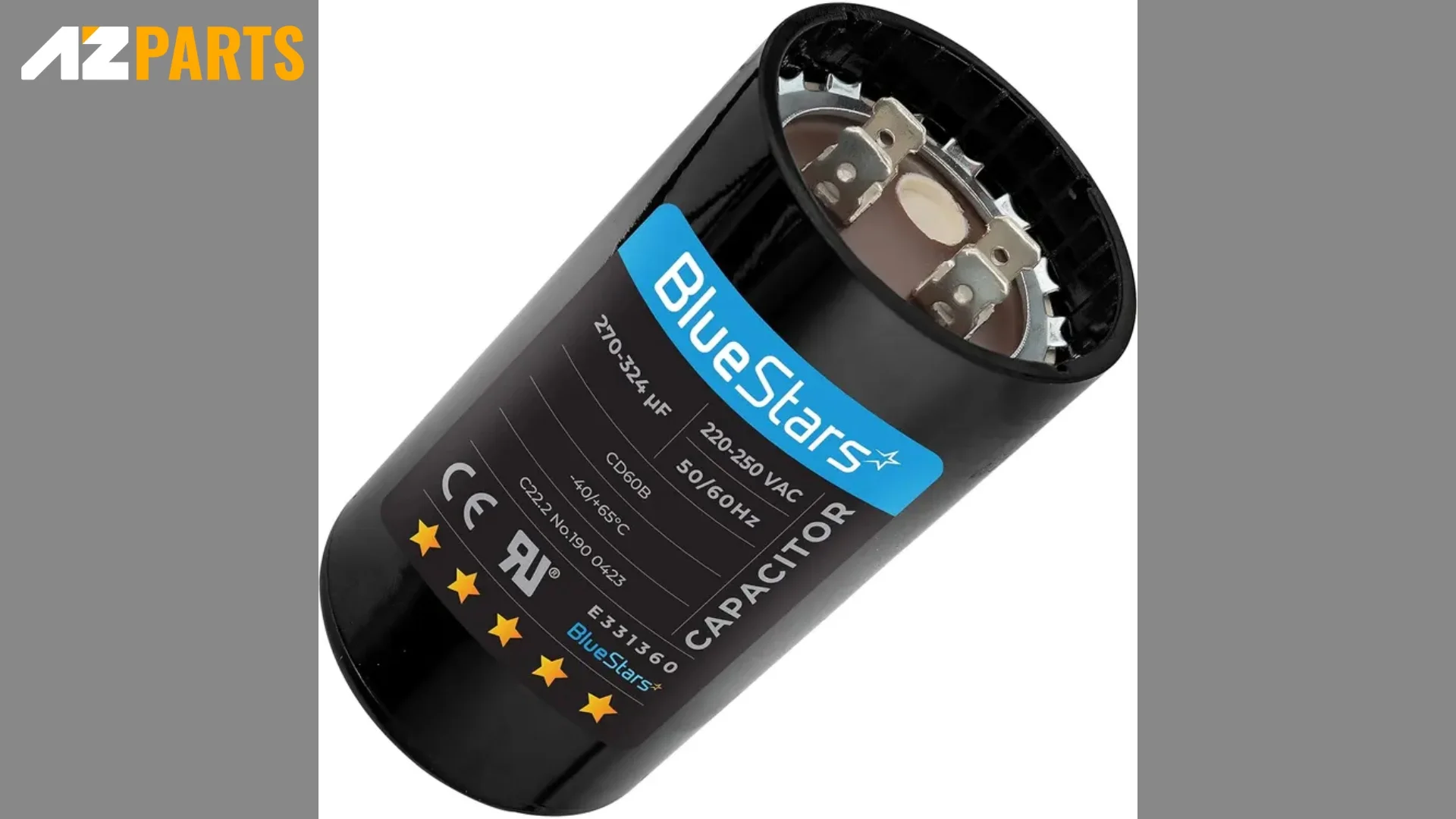
Using AZParts AC capacitors to restore your AC’s operation (Source: AZParts)
3.8. Inspect Outdoor Condenser Unit
Go outside and inspect the condenser unit for any visible damage, rust, debris, or animal nesting. Make sure the surrounding area is clear for proper ventilation. To protect your condenser from long-term damage, especially during off-seasons, consider using a durable AC cover from AZParts to shield it from dust, leaves, and harsh weather conditions.
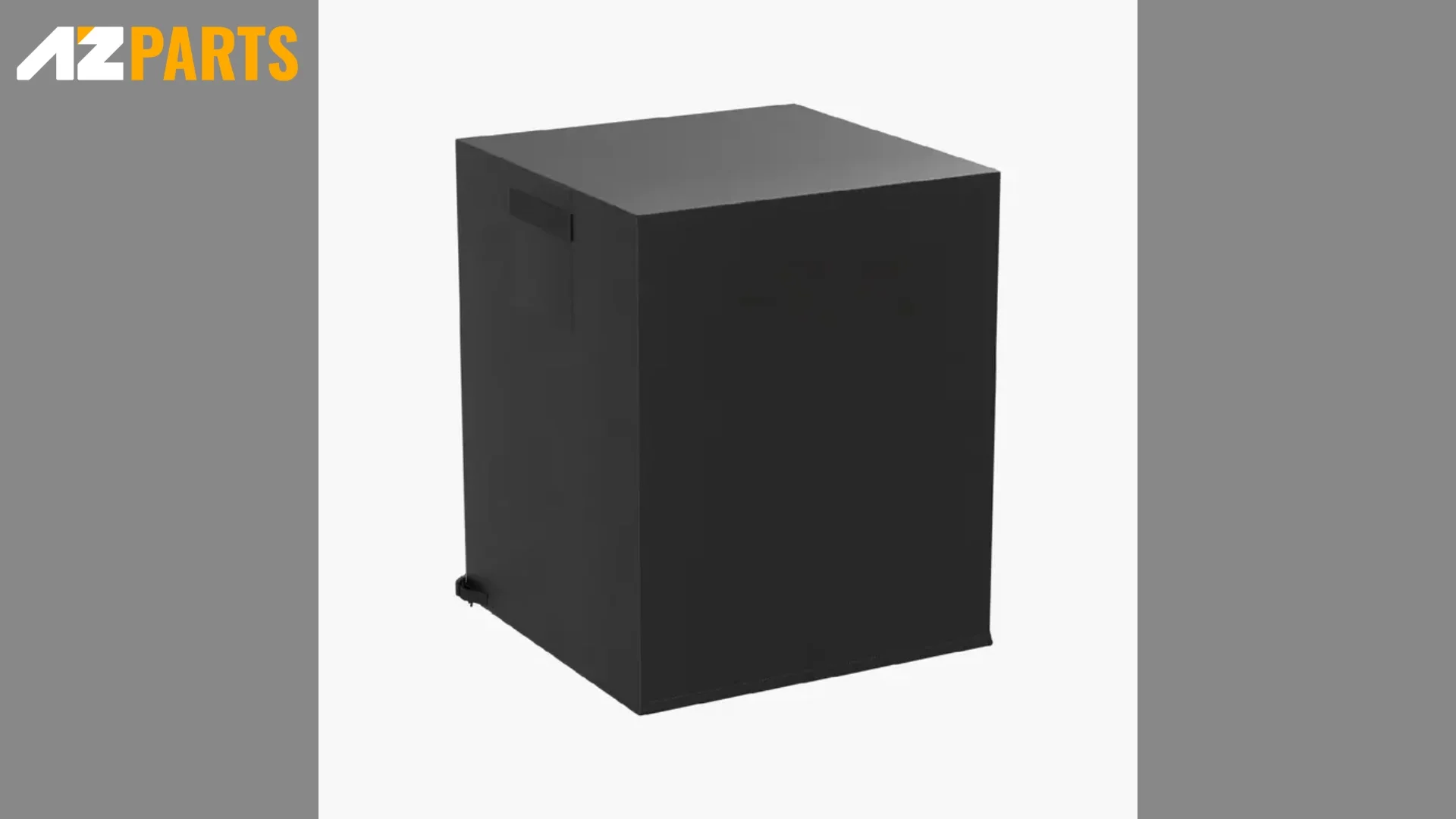
Using a durable AC cover from AZParts to shield your outdoor condenser unit from external factors (Source: AZParts)
3.9. Clean Outdoor Condenser
Use a soft brush or garden hose (on low pressure) to gently remove debris from the condenser fins and coil. Be careful not to bend the fins. A clean condenser helps release heat more efficiently, improving your AC’s cooling ability and reducing the amount of work the compressor has to do.

Wiping down outdoor AC condenser with a cloth (Source: AZParts)
3.10. Test Refrigerant Charge
Finally, ensure your AC system has the correct refrigerant level. Too much or too little refrigerant affects performance and energy use. If you suspect a leak or imbalance, use the proper tools like AC piercing valves and AC port adapters from AZParts to safely monitor and service the refrigerant line. Always follow safety guidelines or hire a certified technician if you're unfamiliar with refrigerant handling.
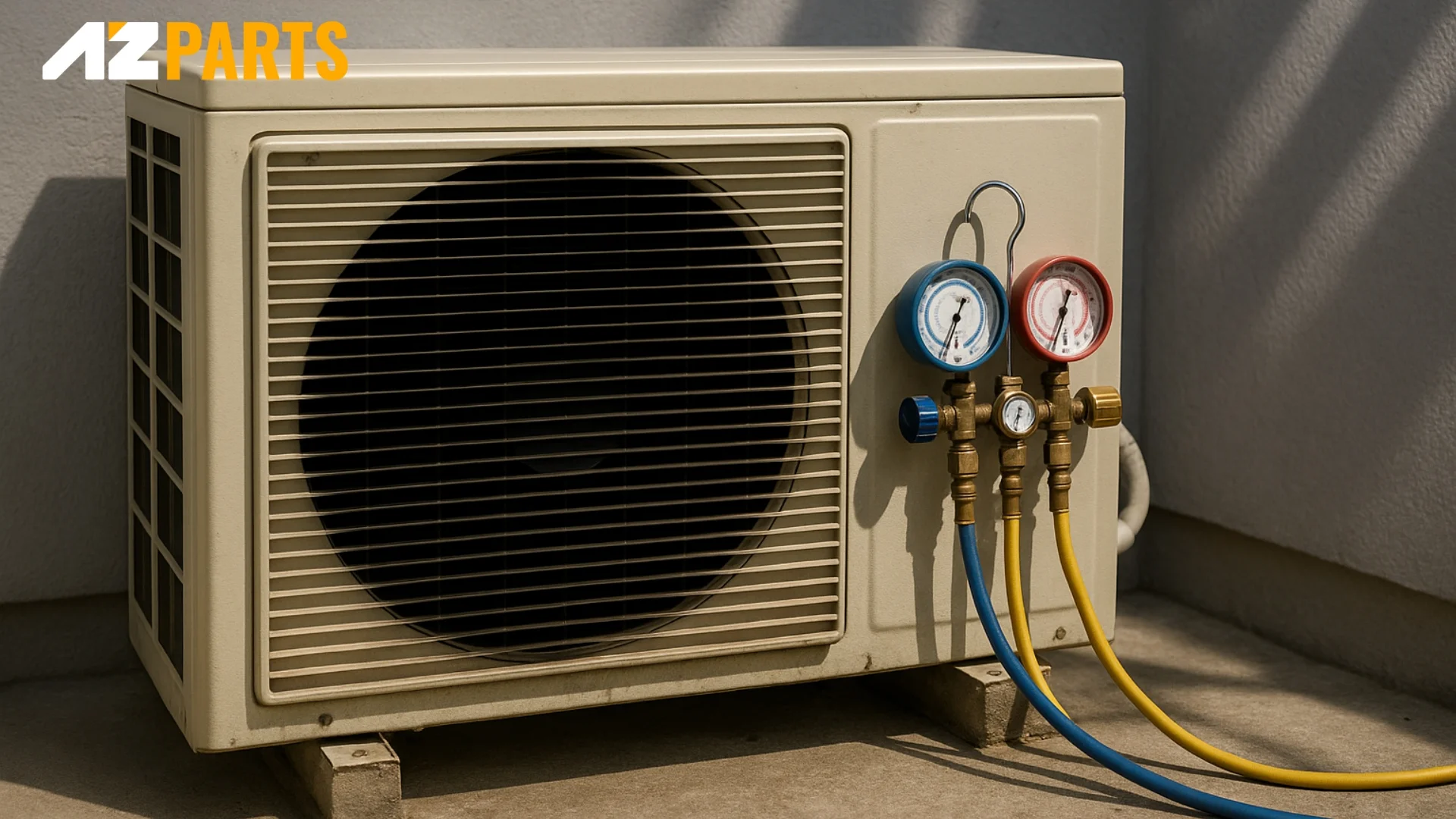
Testing Air Conditioner Refrigerant Charge with Manifold Gauge Set (Source: AZParts)
4. FAQs about AC tune up
4.1. How much is a tune up on an AC unit?
The cost of an AC tune-up varies depending on the service provider, system type, and what’s included. A typical tune-up involves inspecting electrical parts, cleaning the coils, checking refrigerant levels, and ensuring overall performance.
4.2. How often should AC be tuned up?
You should schedule an AC tune-up once a year, ideally before the summer season starts. Regular maintenance helps improve energy efficiency, prevents breakdowns, and extends the life of your system.
4.3. Can I do an AC tune up myself?
Some basic maintenance tasks like cleaning filters, clearing the drain line, or rinsing the condenser, can be done at home. However, more technical steps like testing electrical components or checking refrigerant should be handled by a professional for safety and accuracy.
4.4. How much should I pay to get my AC recharged?
Refrigerants should only be recharged if the system is low due to a leak or improper installation, it’s not a regular part of a tune-up. If your AC isn’t cooling properly, a technician should first diagnose the cause before adding refrigerant. Simply topping it off without fixing the leak won’t solve the issue and may lead to more damage over time.
Regular maintenance like cleaning coils, replacing filters, and checking components such as capacitors, covers, or piercing valves can significantly improve AC efficiency. If you're replacing parts yourself, don’t overlook essentials like port adapters for accurate connections. For long-term performance and reliable fixes, choose parts you can trust. Shop quality AC parts from AZParts to keep your system running efficiently, season after season.
Learn more about other AC's mantaining tips:
- How to maintain air conditioner
- Should i cover my air conditioner in the winter
- Can i replace ac capacitor myself
Contact Info
Address: 8 The Green, Ste A, Dover, Delaware 19901-3618, United States
Email: support@azparts.com
Air conditioner
Further Reading
Further Reading





